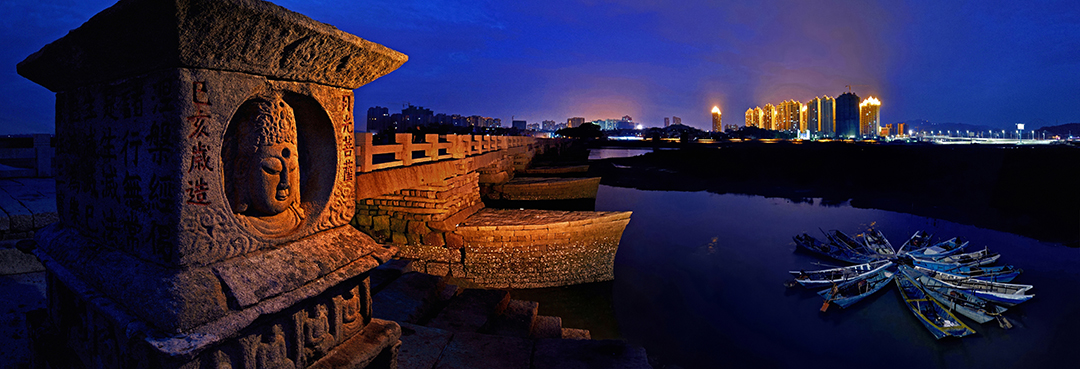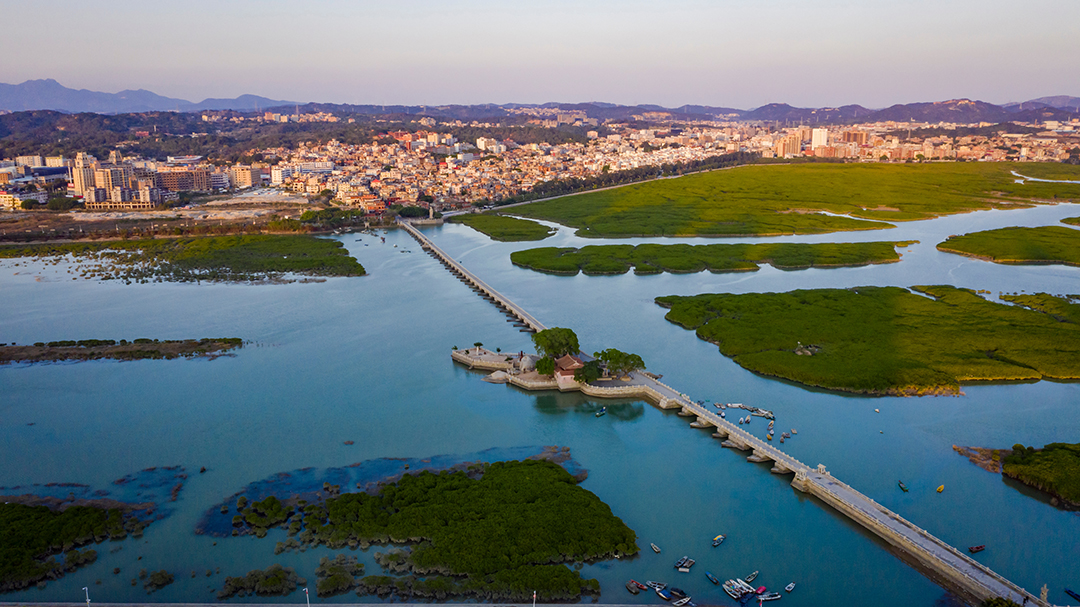
Luoyang Bridge is a representative component reflecting the Transportation Network of Quanzhou as an emporium of world maritime trade. Luoyang Bridge is situated at the mouth of the Luoyang River about 10 kilometers northeast of Quanzhou city. It was originally known as Wan’an Bridge as it was near the ancient Wan’an Ferry. It was a vital transportation link connecting Quanzhou to northern Fujian and the interior regions. Construction began on Luoyang Bridge in 1053 and was completed in 1059. Running northeast to southwest, the extant bridge is about 731 meters long and 4.5 meters wide. It has 47 spans and 45 piers and passes a small natural island in the middle of the river. The stone beams of the bridge are granite strips of a considerable size. There are balusters and guardrails on both sides of the bridge deck. During the construction, rocks were laid on the bottom of the river to form a dyke, on which piers with pointed cutwaters were set; this is akin to the construction of “raft-shaped foundations” in modern engineering. To prevent the rocks from being swept out by the strong currents, oysters were bred on the piers, a method known as “reinforcing the foundation by cultivating oysters”. It was an ingenious method of using living organisms to assist in reinforcing the structure of a bridge. Heavy stone slabs were carried by wooden boats into position at high tide, and the boats moved away at low tide, putting the slabs into place; this was known as the method of “transporting heavy stone slabs by using buoyancy forces and waves”. These technical methods demonstrated the ingenuity and creativity of the people in adapting the construction process to local conditions.
There are some ancillary structures on the bridge, the small island in the river, and the northern and southern ends of the bridge. On both sides of the bridge, there are seven stone towers in various shapes from the Song Dynasty, as well as four stone statues of generals providing divine protection for the bridge. On the islet stand the Central Pavilion and the Stele Pavilion with the inscription “Western River, Sweet Rain”. On the southern end of the bridge is a temple dedicated to Cai Xiang, who is credited with building the bridge. The temple was first built during the first half of the 12th century, and the extant building complex was a reconstruction in 1875. On the northern end of the bridge is Zhaohui Temple from the Song Dynasty, which is dedicated to King Tongyuan; the temple used to be the command center for Cai Xiang when he was directing the bridge construction.




 闽公安备35050302000734
闽公安备35050302000734
